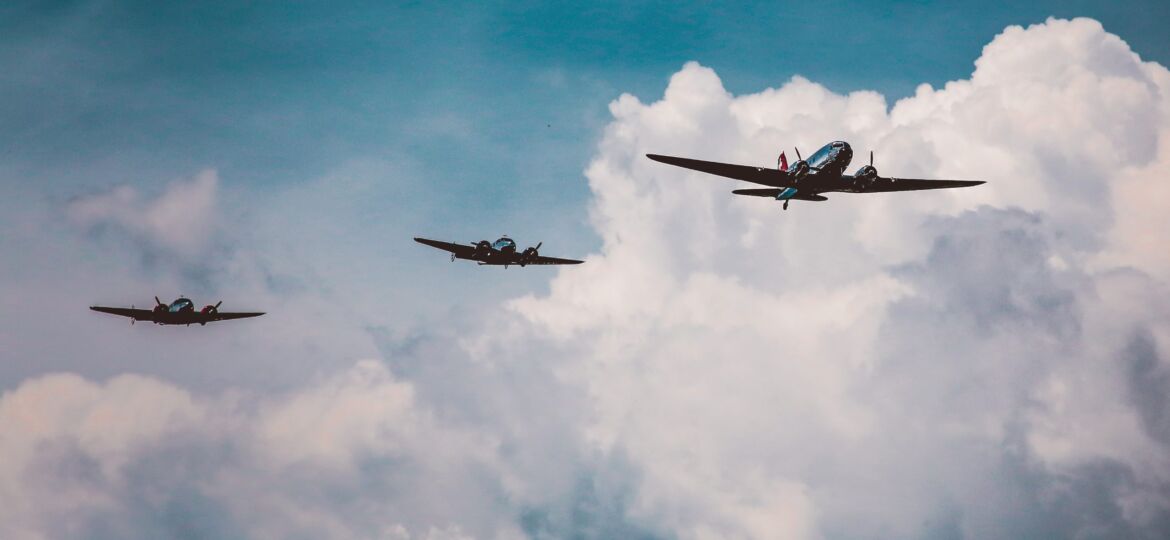
The aviation and defense industry in Turkey had a remarkable year in 2019; in the first nine months, the industry generated $1,855 million 274 thousand dollars in exports, an increase of 37.7% compared to the same period in 2018.
According to data from the Turkish Exporters Assembly (TIM), the defense and aerospace industry generated $1,9 billion in exports in the first three quarters of 2019. While Turkey’s exports increased by only 2.6% during this period, the figure for defense and aeronautics industry exports reached 37.7%.
The industry recorded more than $883 million in exports in 2011, $1,26 billion in 2012, about $1,4 billion in 2013, more than $1,6 billion in 2014, and $1,65 billion in 2015. These figures increase to $1,67 billion in 2016 and $1,74 billion in 2017.
On the other hand, Turkey is working on TF-X, the 5th generation fighter aircraft that the Turkish manufacturer is developing as part of a program launched in 2010. According to the timetable announced by Turkish Aerospace, the first flight of the TF-X could take place in 2023 or even 2025 at the latest. And its entry into service would take place in 2028.
In the last couple of years, the defense and aviation industry in Turkey experienced an increase of 8 to 10 per cent annually in terms of export. Especially in the last six years, defense and aerospace exports have risen by 61 per cent, which is six times more than the overall exports of Turkey.
Turkish defense and aviation companies broke order records!
The Turkish association of companies in the defense and aeronautics industry (SASAD), exhibited a brilliant performance the previous year in the defense and aeronautics industry with the participation of active members. According to this, companies engaged in the defense and aeronautical industry recorded an increase of 52% compared to the previous year in the orders they received in 2018.
Orders for the industry, reaching 12 billion 204 million dollars, broke a record in 2019. Order revenue in 2014 was $11 billion; in 2015 was $7,686 million in 2016 was $11,913 million, and in 2017 was $8,55 billion.
A snapshot of the Turkish Defense and Aviation Industry

Defense Industry
Although Turkish defense spending has significantly grown in the past two decades, the turnover of the Turkish defense industry has also doubled in the last seven years, with an average annual growth rate of 10%.
While Turkey has significantly boosted its domestic capability in the defense industry, it continues to import a considerable amount of aerospace products. Turkish defense companies, Aselsan, TAI, and Roketsan are among the major players in the defense industry worldwide. Such Turkish defense companies have achieved significant economic successes, which are reflected in international comparison lists. Four national defense companies are among the world’s leading companies, according to a list published by Defense News Top 100 – a U.S. magazine that tracks the global defense industry.

The Turkish defense industry, which has succeeded in manufacturing many weapons and ammunition systems, reduces the foreign dependence of the Turkish Armed Forces on the one hand, and on the other hand, contributes significantly to the Turkish economy and foreign policy. As of 2053, Turkey’s defense industry targets 100% independence, with an export capacity of USD 50 billion.
Exports are the indicators of the development of the industry in Turkey. In support of its technical and commercial advances, Turkey’s aerospace and defense exports have been growing firmly and steadily in recent years, according to order intake figures provided by the Union of Defense and Aerospace Exporting Companies (Savunma Sanayi İhracatçıları, SSI).
Moreover, the MILGEM maritime vehicles and the ATAK helicopters developed with national means have been the subject of the most significant sales in the history of the Turkish defense. The armed and unarmed UAVs are also a sign of Turkey’s success in the field of aircraft.
Turkey spent $1,45 billion on defense research and development in 2018 along with employment in the defense industry, which increased to more than 67000. The scientific policy supports the upgrading of Turkish researchers and engineers so that Turkish defense companies are better able to assimilate the technologies transferred to them through compensation and, in the long term, to produce their technologies, ideally to compete with the foreign companies on the international market.
Turkey’s aviation and defense industry produces about 60% of its own defense needs, while 40% comes from international sources. The government aims to improve the share of local production over the next five years, notably by supporting other companies in the sector, so that they can become one of the world’s top 100 companies like Aselsan and TAI.
The strategic focus is partly on aerospace, command and control systems, and simulators. Several exciting projects are also under development, particularly the helicopter and fighter aircraft projects that will span the next 10 to 15 years. Energy efficiency and production will be another primary focus, particularly to meet the needs of the Turkish Armed Forces. The industry is growing, and the foundation plans to increase current export levels from about $1 billion to $5 billion by 2023.
Thanks to the clusters in the industry, companies work hand in hand to fasten the development process by all means. Defense-focused groups and special investment zones support Turkey’s efforts to strengthen its indigenous military capabilities in Ankara, Eskisehir, Izmir, and Istanbul. Like many other prosperous economies, the Mediterranean nation has turned to the cluster model to promote the growth and competitiveness of specific industries, notably aerospace and defense (A&D). In line with this policy, five major A&D-focused clusters have emerged as centres of excellence across the country over the past eight years. These include; OSSA Defence & Aviation Cluster, Teknokent Defence Industry Cluster (TSSK), Eskisehir Aviation Cluster (ESAC), Aerospace Clustering Association (ACA) and SAHA Istanbul Defence and Aerospace Cluster. Member companies are located in various Technological Development Zones (TDZs) or Technoparks, Organized Industrial Zones (OIZs), and Free Trade Zones (FTZs) throughout the country. Most of Turkey’s A&D industry is concentrated in the capital, Ankara, alongside decision-makers and government institutions.
Turkey hosts significant events with important international attendance such as; Eurasia Airshow, Istanbul Airshow, IDEF, etc. and as the industry expanded, major aerospace clusters appeared in Turkey. Every year many critical international companies belonging to this sector gather in the events or fairs in Turkey.
Civil aviation in Turkey
Turkey’s advantageous location turns it into a natural aviation hub, so the Turkish government has invested significantly in airport infrastructure to make Turkey an international hub. In 2018, Turkey ranked 9th in world passenger traffic and 5th in the European passenger ranking. The Turkish civil aviation industry has reached a turnover of 29 billion 450 million dollars last year and provides 205 thousand people with jobs.

Over the last 10 years, more than 30 million tourists have visited Turkey annually on average. Throughout the years, Turkey has also become an essential location for the civil aviation business. In 2018, the number of airline passengers increased to 210.2 million, including 97.2 million international passengers, compared to 34 million in 2004. As of 2019 in Turkey, 11 Airlines, 43 Air Taxi Companies, 82 General Aviation Companies, 31 Balloon Companies operate.
Especially in the last ten years, Turkey has become an ideal place for the civil aviation business. The number of civil aircraft increased from 626 to 1404 between the years 2003 and 2018, and the size of all the airlines’ fleet in Turkey increased to 540, including cargo aircraft in 2016. Turkey is determined to position itself as a center for civil aviation. After the new airport has been completed in Istanbul, Turkey now has the largest airport in the world with a capacity of 200 million passengers per year and flights to almost 350 international and domestic destinations in 2020.
The Turkish aviation and defense industry has grown exponentially over the last two decades with more local suppliers for global players in addition to increasing the number of airports and passengers. To support aviation exporters supplying parts and maintenance to the worldwide aviation giants, the Ministry of Commerce launched a supply chain development and export program in cooperation with US designer and manufacturer Boeing.
As can be understood from all the information above, the aviation and defense sector will be crucial in the future of Turkey.
ERAI Turkey has been working with significant actors in the sector to see all of our references visit our references page.

